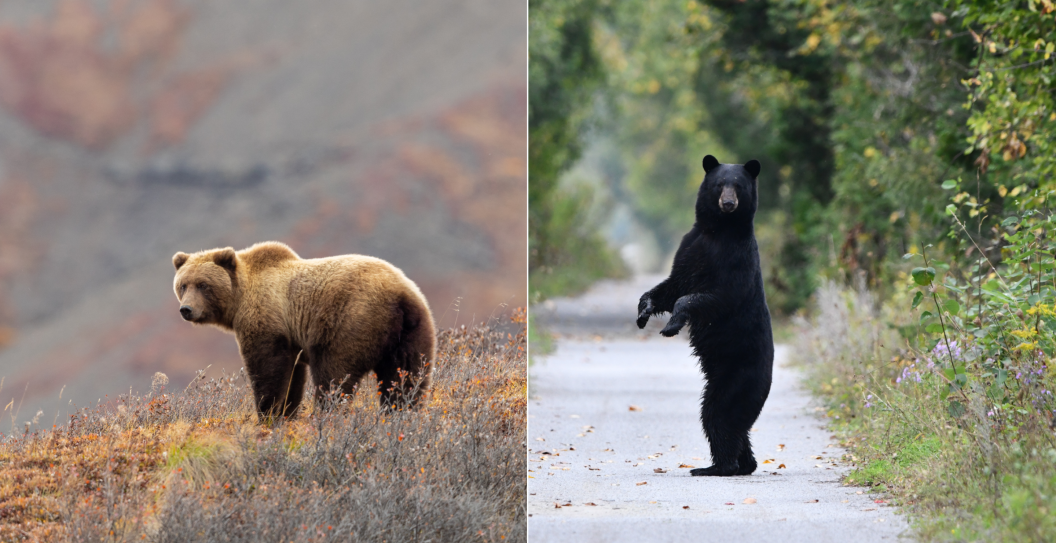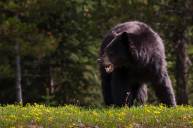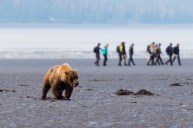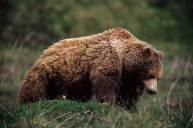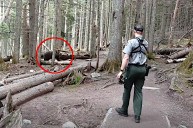Ah, a walk in the woods. The wind whistling through the trees, the sound of birds chirping, the telltale snap of a branch beneath a heavy paw ... wait, what?
There are some animals you'd rather not see up close and personal—and bears tend to lead this category.
As both a backcountry instructor and park ranger in the Appalachian Mountains (as well as a long-distance backpacker with many months spent hiking through grizzly territory), I've had my share of bear experiences moving through bear country.
Because my job—and, well, my life—depends on it, I always make sure I'm prepared with what to do if I see a bear. Though rare, bear attacks do occur, and they can be serious or fatal.
If you're planning to hike, camp, or explore in "bear-itory" this year (which is pretty much everywhere outside of the Midwest), here are a few things I've learned to help keep everyone—including the bears—safe.
Types of Bears in the United States
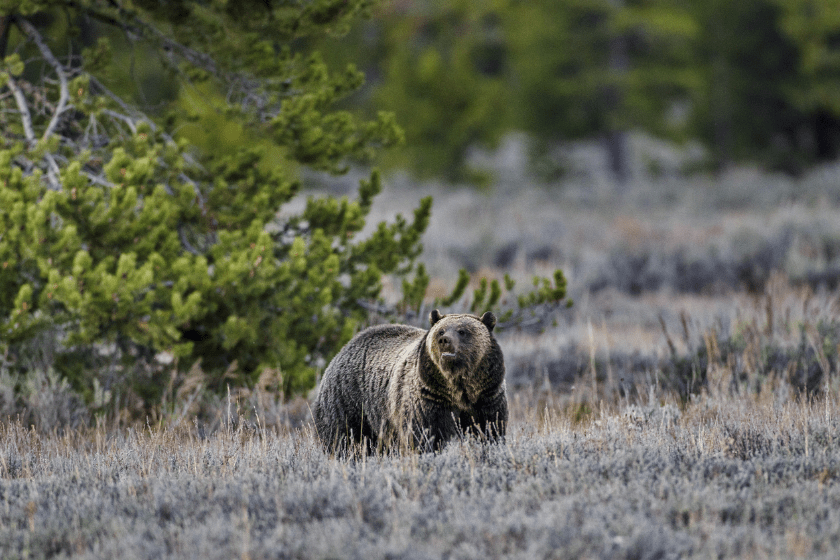
Brown bear | Getty images, Florence and Joseph McGinn
The United States is home to three distinct types of bears: black, brown, and polar.
Polar bears—those huge, white, hulking beasts most commonly associated with Coca-Cola and Christmas—are only found in the northernmost stretches of Alaska.
Similarly, the vast majority of brown bears are concentrated within Alaska, though isolated populations—also known as grizzly bears—do exist in rural Wyoming, Montana, Idaho, and Washington. While brown bears can be brown, black cinnamon, or blonde, brown bears are distinct thanks to their larger size (compared to black bears); distinctive hump between their shoulder blades; long claws; and round, plate-shaped face. Brown bears are usually more aggressive, too.
Black bears, meanwhile, are by far the most commonly seen, with approximately 600,000 distributed throughout almost every forested or mountainous region in the United States and Canada. They're typically black or dark brown, usually with a lighter patch around their eyes and nose; have a longer face with a pointy snout; and are usually smaller (though not always).
The National Park Service has a handy tool you can use to see which bears are at which parks so you know which kind you're likely facing if you see on.
What To Do If You See a Bear
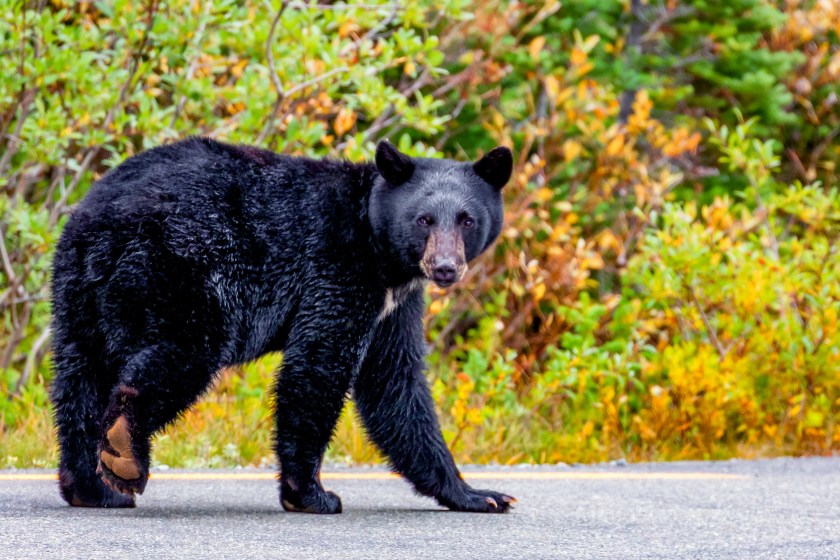
Black bear| Getty Images, Mark Lee
First and foremost, remain calm. The old adage that the bear is more afraid of you than you are of it does apply here, though it may not feel that way when you're staring down a 1,000-pound predator.
Remember: The vast majority of bear encounters end without injury.
Here's how to handle a bear sighting:
If the Bear Doesn't See You
- If you're more than 100 yards (300 feet) away, stop where you are and keep a safe distance.
- If the bear is closer, slowly walk away. If you haven't been spotted, you may be able to walk around the bear without being noticed.
- Never run or advance toward a bear.
- Don't throw rocks or sticks.
- Calmly walk away while keeping the animal in your sight, even if it means carefully walking backward.
- Be sure to scan your surroundings for cubs or other bears, including in the trees.
- Do not drop your pack—it helps you appear larger and more threatening.
If the Bear Does See You
Keep in mind, bears rarely attack humans, especially those traveling in groups.
- If the bear has already noticed you, it's time to make noise.
- Regardless of whether you're alone or traveling with others, extend your limbs so you appear as large as possible. You can wave your hiking poles for even more extension.
- If you have bear spray, now is the time to remove the safety mechanism and prepare to use it.
- Clap, yell, or sing. The bear should run away.
If the Bear Gets Aggressive
- If the bear approaches, do not run, scream, or make any sudden movements, as this may startle the bear or cause it to identify you as prey.
- If a bear stands on its hind legs, it's usually just curious. Stand your ground or move away slowly, all while speaking loudly and with confidence.
- If a bear advances toward you, it may give a "bluff charge," or a quick motion in your direction, before veering away. Again, stand your ground, make yourself as large as possible, and make noise.
- If you're carrying bear spray and the bear is within 20 feet of you, aim toward the bear's face and shoot the spray. Studies show that bear spray is 90% effective in deterring unwanted behavior, with no long-term harm to the bear.
- If you're able, walk away slowly. If not, stand your ground until the bear leaves.
If a Bear Attacks
Though rare, bear attacks do happen. The most common causes are due to mother bears protecting their cubs, food sources, or their space. Always give bears a wide berth in the wilderness to proactively avoid the possibility of confrontation.
If you are attacked by a brown bear or grizzly:
- Lie on the ground with your pack on your back and play dead.
- Ideally, lie flat on your stomach and clasp your hands behind your neck to protect yourself.
- Remain as still as possible until the bear leaves, as further aggression can provoke the bear.
- If the bear continues to be aggressive after you play dead, fight back. Use your hiking poles, sticks, or whatever else you can find and aim at the bear's face.
If you are attacked by a black bear:
- Do not play dead.
- Fight back using any available object, concentrating on the bear's face.
How to Avoid Bears in the First Place
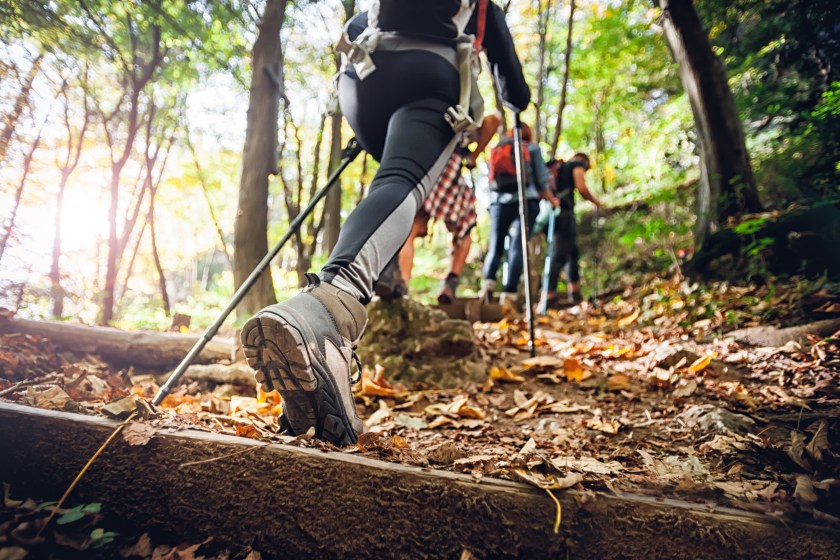
Getty Images, leszekglasner
The best way to know what to do if you see a bear is to avoid seeing one entirely. Nearly all unwelcome encounters with bears can be avoided by following these basic practices:
- Always give bears space.
- Make loud noises while hiking.
- Properly store and secure all food.
- Keep a clean camp.
- Keep pets at home.
- Carry bear spray in grizzly territory.
Remember: You can always call the park, trail, or campsite you plan to visit and inquire about recent bear activity.
READ MORE: How Exactly Bear Spray Works, From a Bear Repellent Expert
